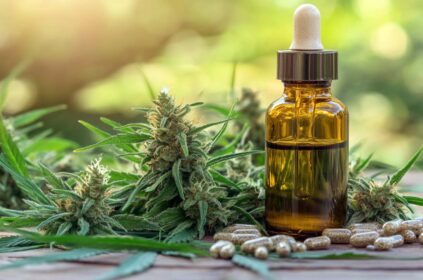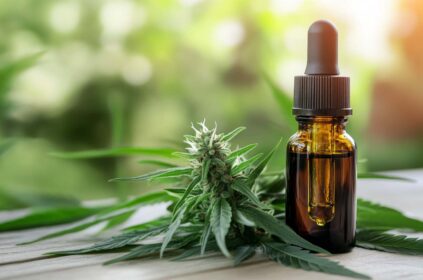The Science Behind CBD: How It Works in the Body
Cannabidiol (CBD) has surged into the spotlight over the past few years, captivating both wellness enthusiasts and medical professionals alike. As a non-psychoactive compound derived from the hemp plant, CBD is celebrated for its potential therapeutic benefits. However, understanding how it works requires diving deep into the science behind its effects in the body. In this article, we’ll explore the endocannabinoid system (ECS), how CBD interacts with it, and the various physiological effects it may have.
The Endocannabinoid System (ECS)
To grasp the impact of CBD, one must first become acquainted with the endocannabinoid system. This complex network is critical for maintaining balance, or homeostasis, within the body. The ECS plays a role in a wide range of bodily functions, including:
- Pain sensation
- Immune response
- Mood regulation
- Appetite control
- Sleep cycles
- Memory and learning
By regulating these essential processes, the ECS helps your body adapt to changes and maintain stability.
Components of the ECS
The ECS is composed of three primary elements that work together to maintain homeostasis:
- Cannabinoid Receptors: Among the many receptors in the ECS, the two most important are CB1 and CB2. CB1 receptors are primarily found in the brain and central nervous system, influencing pain and mood, while CB2 receptors are mainly located in peripheral tissues, particularly immune cells.
- Endocannabinoids: These are naturally occurring compounds produced by the body. Anandamide (AEA) and 2-arachidonoylglycerol (2-AG) are two well-studied endocannabinoids, which are generated and broken down in a tightly regulated manner.
- Enzymes: These are responsible for the synthesis and degradation of endocannabinoids. For example, fatty acid amide hydrolase (FAAH) breaks down AEA, regulating its availability.
Mechanism of Action of CBD
Unlike tetrahydrocannabinol (THC), which directly binds to cannabinoid receptors, CBD operates through a more nuanced mechanism. It interacts with the ECS by influencing multiple pathways and receptors, expanding its therapeutic potential.
Interaction with Receptors
- CB1 and CB2 Receptors: CBD is a negative allosteric modulator for CB1 receptors, which means it can alter how these receptors respond to other cannabinoids like THC. Interestingly, CBD can also help increase levels of AEA by inhibiting FAAH, leading to enhanced activation of both CB1 and CB2 receptors.
- TRPV1 Receptors: CBD activates these receptors, involved in pain perception, inflammation, and body temperature regulation. This action can lead to pain relief and a reduction in inflammation.
- 5-HT1A Receptors: By interacting with serotonin receptors, CBD exhibits anxiolytic effects, contributing positively to mood and stress relief.
- Adenosine A2a Receptors: CBD enhances the levels of adenosine, which helps stimulate these receptors, contributing to anti-inflammatory effects and neuroprotection.
Other Mechanisms
CBD’s multifaceted interactions extend to additional systems as well:
- Ion Channels: The compound can inhibit voltage-gated sodium channels while activating potassium channels, a combination that helps regulate neuronal excitability and may alleviate seizures.
- Transcription Factors: CBD’s role as an agonist of peroxisome proliferator-activated receptor gamma (PPARγ) suggests it may influence metabolic and immune activity, further enhancing its therapeutic range.
- Neurotransmitter Uptake: By inhibiting neurotransmitter uptake, like that of dopamine and GABA, CBD can modulate various mood and neurologic functions.
Effects of CBD on the Body
The wide array of CBD’s effects stems from its intricate interactions within the ECS and other bodily systems. Here are some well-studied benefits:
Pain Relief
CBD’s dual action at TRPV1 and CB1 receptors makes it an appealing option for those seeking relief from chronic pain conditions like arthritis and neuropathic pain. By modulating pain pathways, it supports a natural reduction in discomfort.
Anxiety and Mood Regulation
Studies have shown that CBD may help reduce anxiety in both clinical and everyday scenarios. Its ability to interact with serotonin receptors helps promote a sense of calm and well-being, making it a promising option for individuals with anxiety disorders or depressive symptoms.
Inflammation and Immune Response
CBD’s anti-inflammatory properties are of immense interest to healthcare professionals, particularly in the context of autoimmune diseases. Through its CB2 receptor activity and adenosine modulation, CBD helps regulate immune responses, making it potentially beneficial for conditions like multiple sclerosis or rheumatoid arthritis.
Sleep Regulation
Many individuals find that CBD aids their sleep cycles. By interacting with receptors and systems responsible for circadian rhythms, CBD can help mitigate issues related to insomnia, enhancing overall sleep quality.
Neuroprotection
Emerging research suggests that CBD may offer neuroprotective benefits, particularly in conditions like Alzheimer’s or Parkinson’s disease. Its effects on oxidative stress and inflammation present promising avenues for future therapeutic use.
Conclusion
The science behind CBD is as intriguing as the compound itself. Through its interactions with the endocannabinoid system and various receptors, CBD showcases a plethora of therapeutic benefits, from pain relief to mood regulation and beyond. Understanding these mechanisms not only sheds light on how CBD can contribute to health but also empowers individuals to make informed choices regarding their wellness journey.
Actionable Tips
- Consult a Healthcare Professional: Before starting any CBD regimen, especially for medical purposes, discuss it with your healthcare provider to ensure it’s suitable for your needs.
- Choose High-Quality Products: Prioritize products sourced from reputable manufacturers to guarantee safety and effectiveness.
- Start with Low Doses: If you’re new to CBD, begin with a low dose and gradually adjust as you assess your body’s reaction, ensuring you find a comfortable level for your individual needs.
With a growing body of research and an increasing interest in natural alternatives, understanding CBD’s role in health can lead to better, more informed choices for overall well-being. By integrating this knowledge into your approach to CBD, you may discover the diverse therapeutic applications it has to offer.





















